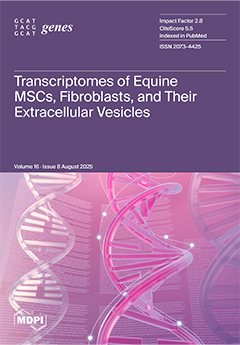Prime editing (
PE), a novel “search-and-replace” genome editing technology, demonstrates significant potential for crop genetic improvement due to its precision and versatility. However, since its initial application in plants,
PE technology has consistently faced challenges of low and variable editing efficiency,
[...] Read more.
Prime editing (
PE), a novel “search-and-replace” genome editing technology, demonstrates significant potential for crop genetic improvement due to its precision and versatility. However, since its initial application in plants,
PE technology has consistently faced challenges of low and variable editing efficiency, representing a major bottleneck hindering its broader application. Therefore, this study conducted a systematic review following the
PRISMA 2020 guidelines. We systematically searched databases—Web of Science, PubMed, and Google Scholar—for studies published up to June 2025 focusing on enhancing
PE performance in crops. After a rigorous screening process, 38 eligible primary research articles were ultimately included for comprehensive analysis. Our analysis revealed that early
PE systems such as
PE2 could perform diverse edits, including all 12 base substitutions and small insertions or deletions
(indels), but their efficiency was highly variable across species, targets, and edit types. To overcome this bottleneck, researchers developed four major optimization strategies: (1) engineering core components such as
Cas9, reverse transcriptase (
RT), and editor architecture; (2) enhancing expression and delivery via optimized promoters and vectors; (3) improving reaction processes by modulating
DNA repair pathways or external conditions; and (4) enriching edited events through selectable or visual markers. These advancements broadened
PE’s targeting scope with novel
Cas9 variants and enabled complex, kilobase-scale
DNA insertions and rearrangements. The application of
PE technology in plants has evolved from basic functional validation, through systematic optimization for enhanced efficiency, to advanced stages of functional expansion. This review charts this trajectory and clarifies the key strategies driving these advancements. We posit that future breakthroughs will increasingly depend on synergistically integrating these strategies to enable the efficient, precise, and predictable application of
PE technology across diverse crops and complex breeding objectives. This study provides an important theoretical framework and practical guidance for subsequent research and application in this field.
Full article






